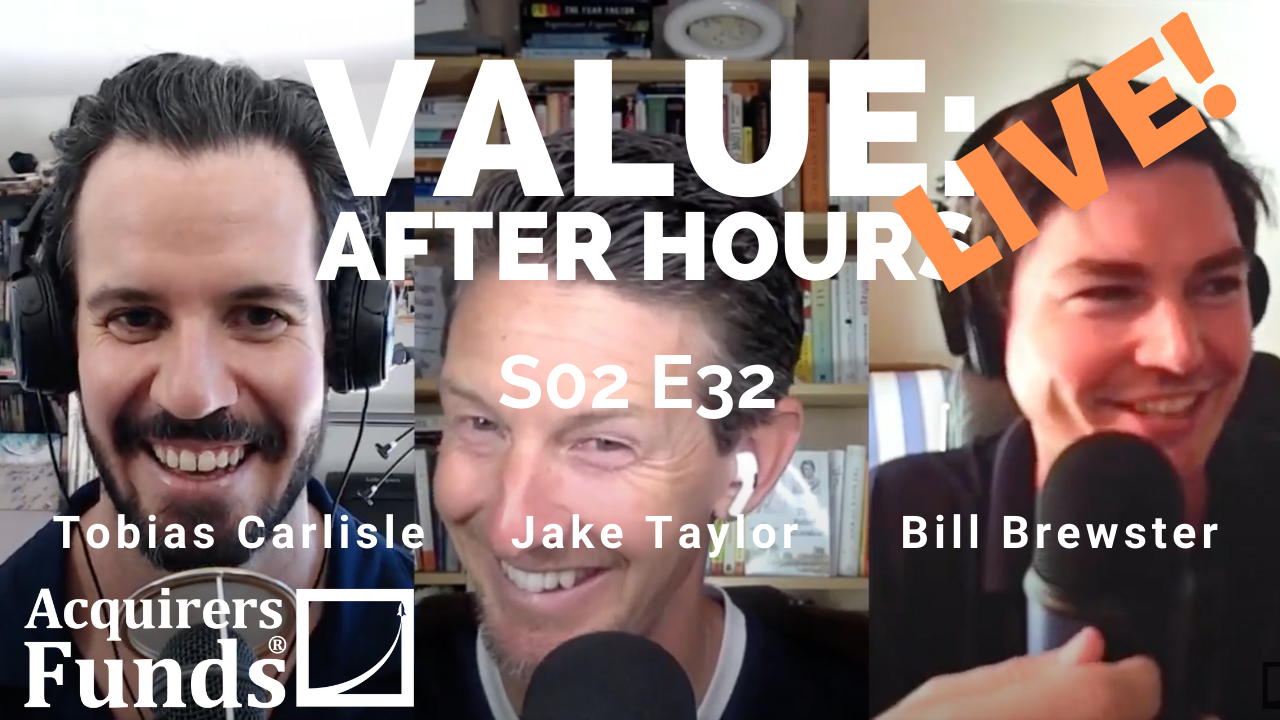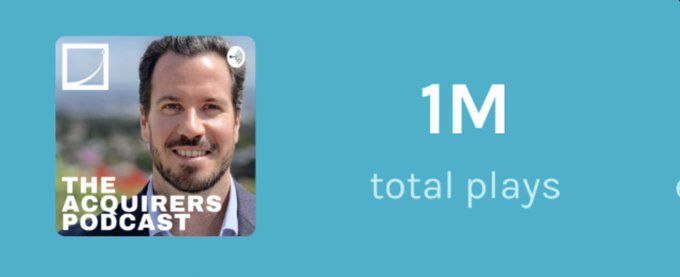During their recent episode of the VALUE: After Hours Podcast, Taylor, Brewster, and Carlisle discussed Cantillon Trillions. Here’s an excerpt from the episode:
Jake: If you read the news at all, you see this concept of a trillion thrown around all over the place. I find it funny because I don’t think we have a very good intuitive grasp of what a trillion looks like. I thought maybe it’d be fun to sort of walkthrough that a little bit and see if we can wrap our heads around it a little bit more. The first thing is, it’s 2008, and the Fed’s balance sheet is under a trillion, it’s at $800 billion.
Tobias: Not even trying.
Jake: Not even trying. And by 2019, we’re at $4 trillion. And now we’re at $6 trillion, maybe 7, is going up. Right now, the June deficit alone for the US government was $864 billion, which is almost a trillion. So, one month, we’ve almost put a trillion dollars on. Well, let’s try to wrap our mind around what does a trillion dollars really mean.
You guys, you understand what like 1 mm looks like, it’s very, very small. A million millimeters is one kilometer, which is basically going down your street. A billion millimeters is 1,000 kilometers, which is about 600-ish miles. And then, a trillion millimeters is a million kilometers, which is 26 times around the Earth. That’s how big the scaling changes when you go from even billions to trillions.
Let’s do another one. A million seconds takes us back to July basically. It’s 12 days ago. A billion seconds takes us back to 1988, so it’s 32 years ago. A trillion seconds takes us all the way back to the Upper Paleolithic, which is 32,000 years ago. So, a trillion is a lot. It’s a lot and we have no real concept of what it means. Let me ask you guys a question. When we talk about trillions of dollars, what your definition of capital? What does capital mean to you?
Bill: I’d say it’s the equipment or resources that money provides.
Tobias: I’d just say it’s the equipment or resources. That’s capital. It’s productive assets.
Jake: Okay. I’ve always found it a little perplexing that we can describe so many different things with the word ‘capital.’ It reminds me of like, Inuits, I guess, have like 50 different words for snow to describe their different conditions of how wet it is or dry. And we have one word that is supposed to carry all of this freight. So, I developed my own little lexicon to help me sort out what does capital mean. I’ve added some different adjectives to it to help me describe it.
The first thing in my mind is this idea of hard capital. With that, I would say that’s like all of the atoms, whether it’s land, buildings, equipment, raw materials, you could even count energy, food, housing, cars, computers, all the physical stuff in the world that we use to satisfy all of our wants and needs. With that, I would also have what we call like soft capital. I actually tried to borrow a little bit from computer where it’s like hardware and software, use the same sort of terminology to describe a technology. Soft capital is all the knowledge and facts and IP, the relationships, the patents, code, mathematics, anything digital, languages, trust. All of these things that are nonphysical things that we can’t see that help us achieve all of our goals.
Then, the third thing I have is actually like financial capital. That is an abstraction that is a– it’s really a claim to hard and soft capital. It’s some abstraction that we all agreed upon, represents something that helps us achieve wants or needs. That’s like stocks, bonds, options, derivatives, gold, crypto, all of the things. I almost think about it like a baseball card. You look at a baseball card and it tells you all the stats about a player, what they’ve done during the game, but it’s not actually the guy playing baseball and hitting a ball. So, with all of that laid out–
Bill: Well, that guy’s labor, right?
Jake: Yeah, that guy’s labor. So, maybe capital is everything in the universe that isn’t human effort, I don’t know. It’s weird. But again, why do we only have one word to describe all those different things that I just named? I tried to come up with an analogy to help us understand. If we just dump a trillion dollars into the system, what does that do? What does that mean to what we just described? The first thing I got to thinking was, in the body, there are these things, sodium-potassium pumps. What those do is– your body will move salts around basically to keep the– it helps maintain osmotic equilibrium, which just means like water is in the right concentration inside of your cells. So, your body actually doesn’t really pump water. What it does is it pumps salt and then the gradient– the salt attracts the water to where the body needs to go to keep equilibrium. That analogy is probably a little too hard to work out. Let’s throw that in the garbage bin. I have a better one, I think.
Bill: Wait, wait, wait, wait.
Tobias: [laughs]
Bill: Hang on. First of all, you just told me, if I heard you correctly, that my body pumps salt and the salt attracts the water. Is that accurate?
Jake: Roughly, yeah.
Bill: I’m calling this fake news just because I’m ignorant. Two, wait–
Jake: You’re using a lot of words.
Bill: And then you want to be like, oh, that’s a throwaway analogy. That’s a good one. I feel like that’s shocking.
Jake: I have a better one, I think.
Bill: Okay. You blew my mind with the first.
Jake: Well, I’m trying to describe something that’s acting on something else to then like, make it change. Imagine that you have a giant table, that’s like plexiglass. And we have all of these metal filings, like little shavings thrown onto the table. And now, imagine that you have magnets underneath the table that you can move around. I don’t know if you guys have ever seen this before, like exploratoriums, and museums for kids, they’ll have these tables that are magnetic with a bunch of filings on it and you can move the filings around. You can create all these different little shapes and stuff based on what you do with the magnets.
Well, in this analogy, I view all of the capital in the world, whether it’s soft or hard, as the filings that are on top of the table. And the money underneath that we’ve just created a trillion dollars’ worth of new magnets basically that are going and pulling around all of the resources under the table that construct really the world around us. The government gives a trillion dollars to some big project that’s “shovel ready.” That turns into something physical in the world.
What’s interesting about it is asking yourself the question, “Well, okay, who gets the new magnets first?” Because they’re going to be the ones that are the strongest and able to move the most filings before more magnets come on.
Bill: What is [crosstalk] Ron Paul argument? What he said made so much sense to me, right? The first people to touch the trillions of dollars are the ones that get the richest. And as it trickles down through the system, the last person to touch it, just gets fucked, because that’s how inflation starts. Right?
Jake: That’s right.
Bill: And then their spending power is just so much lower than the first peoples.
Jake: This was described a long, long time ago by an economist named Richard Cantillon. They’re called Cantillon effects. It’s like who gets the money first matters. He described it as a stream bed– a river going through a stream bed. It doesn’t double the speed of the river, when you double the volume of water. It will show up in different places faster than other places depending on the structure. I guess one of the questions we’re trying to figure out is there going to be inflation or deflation. That’s a really hard question to answer because, okay, we know that we’ve added a lot of new magnets and they’re pulling things around as we speak. Whoever gets it first, all the little piggies at the trough are eating it up first before it gets down to– [crosstalk]
Tobias: You want to be a Banksy? that’s the place to be.
Jake: Yeah, I mean, becoming a billionaire without actually starting a business that’s–
Tobias: Two times.
Jake: Something’s a little off with that. One of the questions to answer is, how many shavings are we going to have because that’s going to matter as well in this whole equation. I read this interesting book over the break, it’s called The Price of Tomorrow, Jeff Booth is the author. He’s talking about exponential technologies and how we’re on the cusp of an exponential change. A lot of it has to do with Moore’s Law and solar prices falling, a million different little things that will turn into a ton of material wealth for us. And it’s hugely deflationary because even government printing won’t be able to stem that tide. What that’s really saying is we’re going to be dumping tons of filings, metal shavings on top of this table, and we’re all going to be wealthy. The magnets won’t even be able to overcome that.
I don’t know how true that all is. I find it to be an interesting thought experiment. I’m curious what you guys think about that. Or is it going to be the magnets that are going to drive–like we’re going to have inflation and the prices of all the things– We’re going to really move the filings around a lot with all the new magnets that we’ve created.
Tobias: It makes me a little bit nervous that we run the experiment at the same time as we’re sort of trying to measure the effects of the experiment. Nothing that the economists seem to think will happen once they do these things, seems to happen. Where’s the inflation? Stock market went up, so maybe that’s asset inflation, hasn’t come through the CPI yet, but then there’s a lot of hedonic adjustment, nonsense that goes on in the CPI figures, and they’ve got an incentive to keep that flattened down.
I think that any theories that I might have heard about how all of this stuff works kind of got blown up in 2008-2009. I really don’t know. It seems that you can just print an endless supply of money and stimulate fiscally as well, and it has no impact. Why the MMT is wrong? Why don’t we just stop paying tax and start printing money and buying bonds with it? But it seems to work. As a matter of logic, that makes no sense at all. But as a matter of practice, it seems to be working.
Jake: And yet here we are.
Tobias: Here we are.
You can find out more about the VALUE: After Hours Podcast here – VALUE: After Hours Podcast. You can also listen to the podcast on your favorite podcast platforms here:
For all the latest news and podcasts, join our free newsletter here.
Don’t forget to check out our FREE Large Cap 1000 – Stock Screener, here at The Acquirer’s Multiple:




